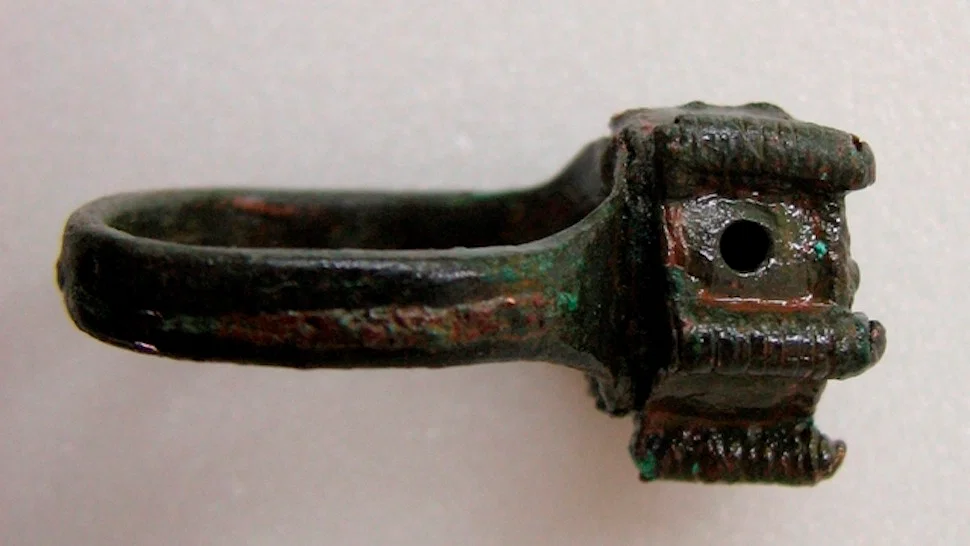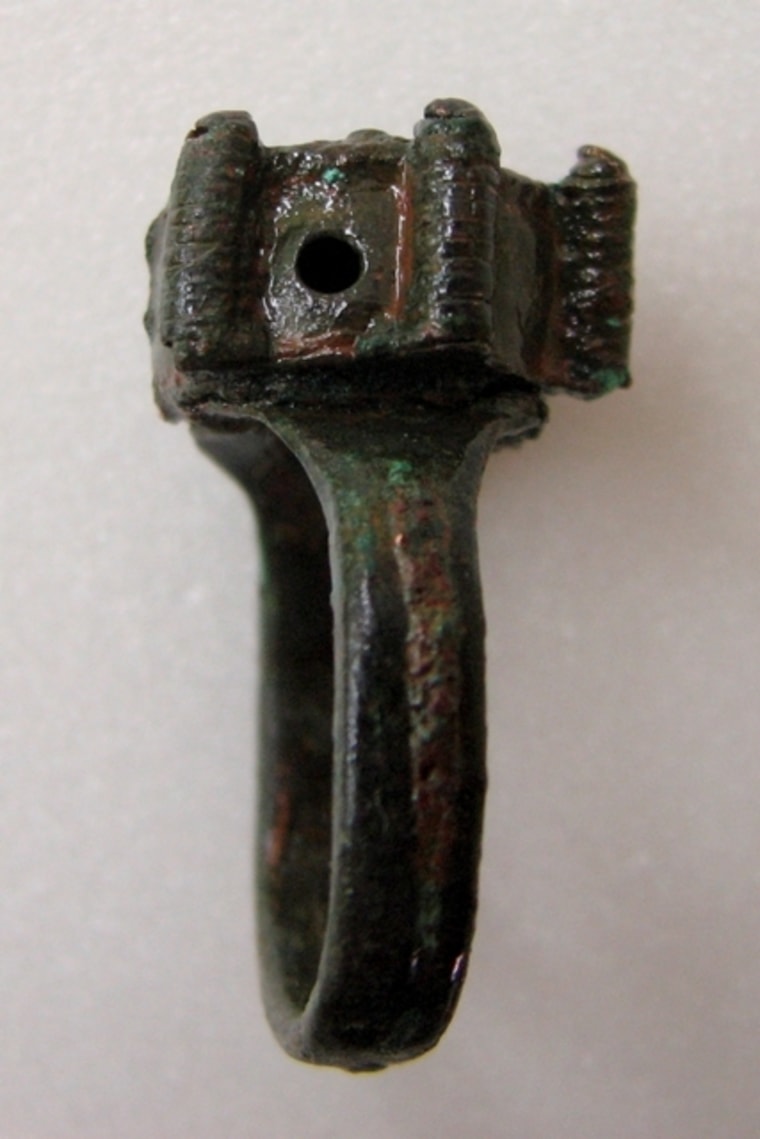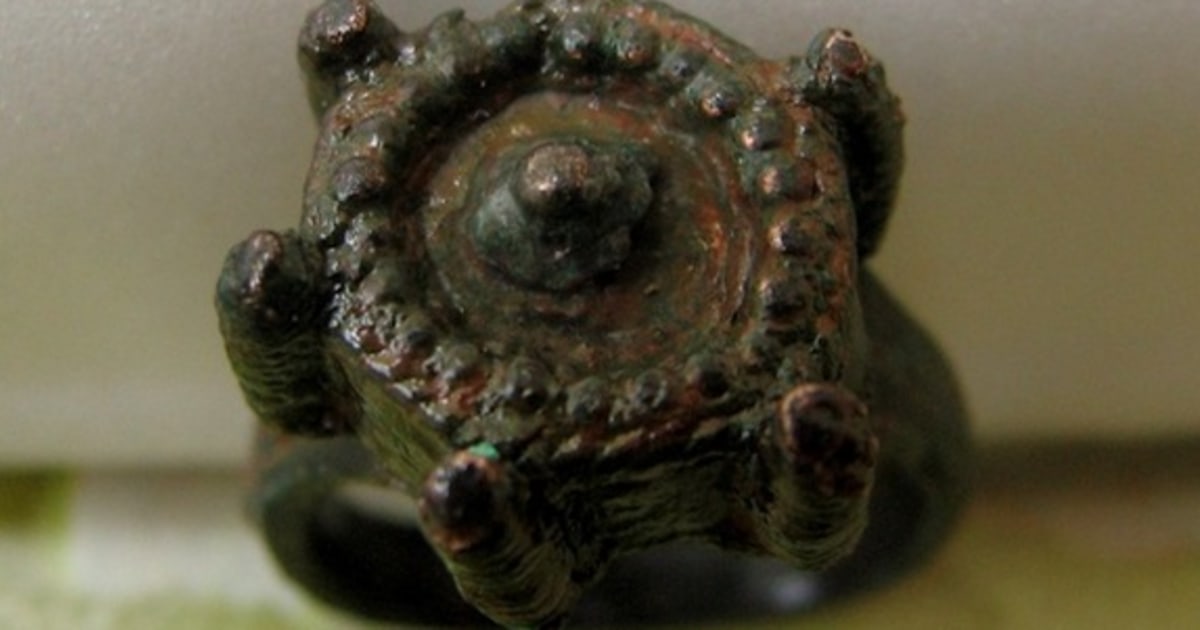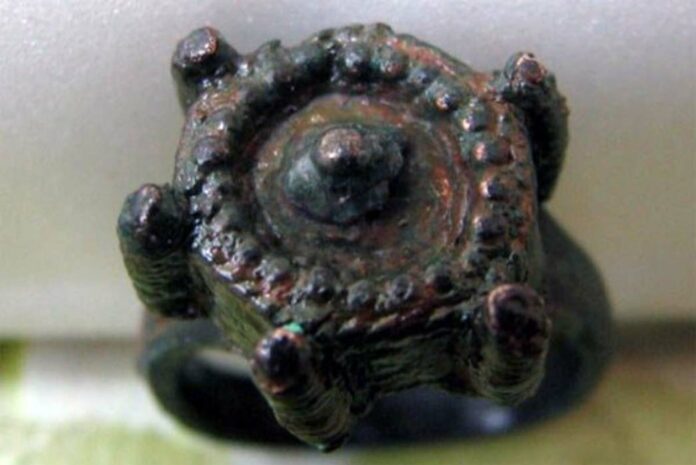In the annals of medieval history, artifacts can often reveal the darkest aspects of human nature. One such chilling discovery was made by Bulgarian archaeologists in 2012, when they unearthed a medieval ring with a sinister purpose. Found within the remains of the fortress on Cape Kaliakra, near Kavarna on the Bulgarian Black Sea coast, this seemingly ordinary piece of jewelry harbored a dangerous secret: it was designed to administer poison.
A Deadly Design: The Poison Ring

The ring in question was not merely a decorative item but a tool of murder. At first glance, it appeared to be a standard medieval ring, but a closer inspection revealed a discreet feature—a tiny cavity where the gemstone would typically be set. This cavity, concealed by the wearer’s finger, was designed to hold a small amount of poison. Its discreet opening allowed the poison to be dispensed into food or drink with ease, making it a perfect instrument for clandestine assassination.
Boni Petrunova, the Deputy Director of the National Archaeology Institute and Museum in Sofia, speculated on the ring’s grim purpose at the time of its discovery. “I have no doubts that the hole is there on purpose,” Petrunova stated. “The ring was worn on the right hand, with the hole positioned to be covered by a finger. This design allowed the poison to be released at a moment’s notice. Clearly, it was not worn constantly but only put on when needed.” The ring’s discovery in an area known for its local aristocracy suggests it may have been used in politically motivated murders during the tumultuous second half of the 14th century, particularly amidst the feud between the ruler Dobrotitsa and his son Ivanko Terter.
Historical Context and Precedents

While this ring is the first of its kind found in Bulgaria, it is not unique in history. Poison rings have been used for centuries, often as a means of committing suicide to avoid capture or torture. Historical accounts suggest that figures like Hannibal used poison rings to evade Roman capture. Similarly, the Greek orator Demosthenes reportedly used a hollow ring to ingest poison as he faced arrest, according to Plutarch’s Lives.
The concept of poison rings dates back to ancient times, with various designs created to conceal lethal substances. By the 8th century, Arabic chemists had developed a nearly undetectable form of arsenic, making poison an even more effective weapon. By the Renaissance, poison rings, knives, and even poison-infused cosmetics became widely available, democratizing the means to commit murder with minimal risk.
A Notorious Case of Poison in Bulgaria

In Bulgarian history, the use of poison as a weapon is famously exemplified by the case of Kaloyan the Romanslayer, who ruled Bulgaria from 1197 to 1207. After Kaloyan’s death, his consort, who later married his successor Boril of Bulgaria, participated in the assassination of her son-in-law Henry of Flanders. On June 11, 1216, Henry was poisoned, illustrating the persistent use of poison in political intrigue.
Conclusion
The 14th-century Bulgarian ring is a striking reminder of how even the most beautiful objects can conceal darker purposes. Its discovery not only sheds light on the historical use of poison as a weapon but also underscores the lengths to which individuals have gone to wield power and influence throughout history. As we unravel the mysteries of such artifacts, we gain deeper insights into the complexities of human behavior and the historical contexts in which these dark innovations were employed.
